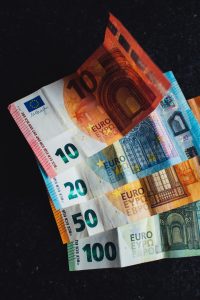Forex robots or expert advisors (EAs) are software programs that are designed to automatically execute trades in the forex market. These robots are based on mathematical algorithms and are programmed to analyze market data, identify trading opportunities, and execute trades on behalf of the trader.
If you are interested in developing your own forex robot, there are several steps that you will need to follow. In this article, we will provide an in-depth guide on how to code forex robot.
Step 1: Define Your Trading Strategy
The first step in developing a forex robot is to define your trading strategy. Your strategy should be based on a set of rules that you have developed based on your analysis of the market.
For example, you may decide to develop a robot that trades based on technical indicators such as moving averages or stochastic oscillators. Alternatively, you may choose to develop a robot that trades based on fundamental factors such as economic data releases or news events.
Once you have defined your trading strategy, you will need to translate it into a set of rules that can be programmed into your forex robot.
Step 2: Choose a Programming Language
The next step in developing a forex robot is to choose a programming language. There are several programming languages that can be used to develop forex robots, including MQL4, MQL5, C++, and Python.
MQL4 and MQL5 are the most commonly used programming languages for developing forex robots. These languages are specifically designed for developing trading algorithms for the MetaTrader platform.
C++ is a more general-purpose programming language that can be used to develop forex robots for a variety of platforms. Python is also a popular programming language for developing forex robots.
Step 3: Learn the Basics of Programming
Before you can start coding your forex robot, you will need to learn the basics of programming. This includes understanding concepts such as variables, loops, and conditional statements.
There are several online resources available that can help you learn the basics of programming. These resources include online courses, tutorials, and forums.
Step 4: Familiarize Yourself with the MetaTrader Platform
If you are developing a forex robot for the MetaTrader platform, you will need to familiarize yourself with the platform. This includes understanding the functionality of the platform and the programming language used to develop trading algorithms for the platform.
The MetaTrader platform is widely used by forex traders and is one of the most popular platforms for developing forex robots. The platform includes a built-in editor that can be used to develop custom indicators and trading algorithms.
Step 5: Start Coding Your Forex Robot
Once you have defined your trading strategy, chosen a programming language, learned the basics of programming, and familiarized yourself with the MetaTrader platform, you can start coding your forex robot.
The first step in coding your forex robot is to create a new file in the MetaTrader editor. You can then start writing the code for your robot, based on the rules that you have defined for your trading strategy.
Your code should include functions for analyzing market data, identifying trading opportunities, and executing trades. You should also include error handling and risk management functions to ensure that your robot operates safely and efficiently.
Step 6: Test Your Forex Robot
Once you have coded your forex robot, you will need to test it to ensure that it is working correctly. You can do this by running the robot in a demo account, using historical data to simulate real-world trading conditions.
During the testing phase, you should monitor the performance of your robot and make any necessary adjustments to optimize its performance. This may include tweaking the rules of your trading strategy or adjusting risk management settings.
Step 7: Deploy Your Forex Robot
Once you are satisfied with the performance of your forex robot, you can deploy it in a live trading account. Before doing so, however, it is important to ensure that you have tested your robot thoroughly and that it is operating safely and efficiently.
In conclusion, developing a forex robot requires a combination of technical knowledge, programming skills, and trading expertise. By following the steps outlined in this article, you can develop a forex robot that is tailored to your trading strategy and can help you automate your trading operations.






